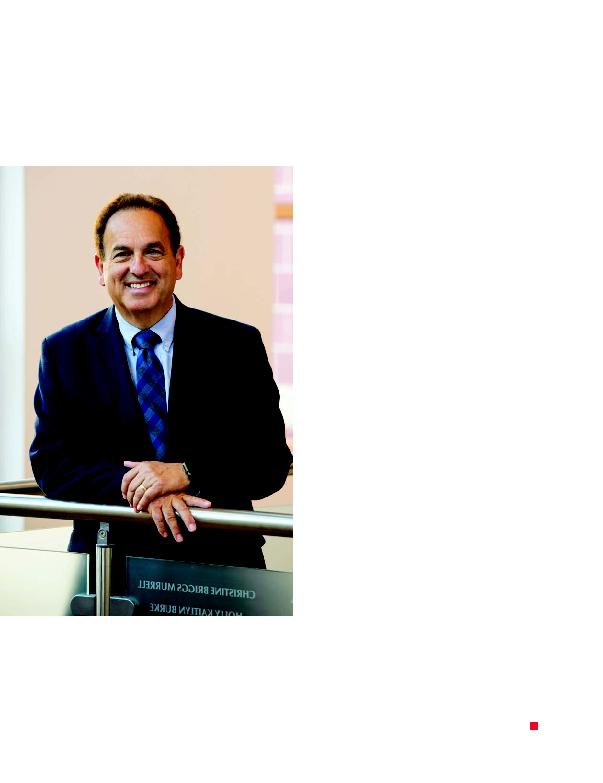
and chair, Departments of Radiation Oncology, Robert
School, and chief of staff, Rutgers Cancer Institute of New
Jersey (below), was created strictly because of need. "One of
the priorities at Robert Wood Johnson Medical School was
Haffty says. When he arrived in 2005, there was very little
research, minimal education, and no training in that disci-
pline. "To start a residency program, you have to make sure
all residents have all training they need in appropriate sites--
for example, GYN, breast, head and neck, and brain," he
adds. Where Robert Wood Johnson Medical School was
lacking--in head and neck cancer--New Jersey Medical
idents to go there for traning. That was the reason a relation-
ship started between the two campuses.
departments. With just two physicians at the Newark campus,
and with Robert Wood Johnson Medical School increasing its
presence in radiation oncology, they suggested creating one
big department that encompassed both schools. Dr. Haffty
approached Peter S. Amenta, MD, PhD, then dean of Robert
Wood Johnson Medical School, who supported the idea, and
in 2009, the joint department was formed--with Dr. Haffty as
its chair.
ties to experience the unique case mix at each. The Newark cam-
pus tends to have more advanced-stage cancers and patients
with socioeconomic issues compared to the New Brunswick
campus. At both facilities, students learning physics get hands-
on experience with a broad spectrum of equipment. And in
research, as Dr. Dhib-Jalbut mentions, clinical trials can be more
robust because of the patient population both facilities serve.
Haffty prefers them to practice in both locations. But living
where it's convenient can be a challenge. He's been successful
growing staff at both medical schools as well as at the Rutgers
Cancer Institute of New Jersey. When Dr. Haffty became chair,
there were five physicians, two physicists, and no basic science
faculty. Currently there are 14 clinical faculty, 12 physicists
who are faculty, and five basic science faculty.
was very doable for us since the department is relatively small.
We're much better being one big department in two places," he
says. "It really, really works for us."
students not only creates efficiencies, it also broadens
feasible. Not every medical school has another within a rea-
sonable geographic distance to have this type of collabora-
tive relationship.
exposure can be enlightening for everyone involved.
O
E
M
R
S
O